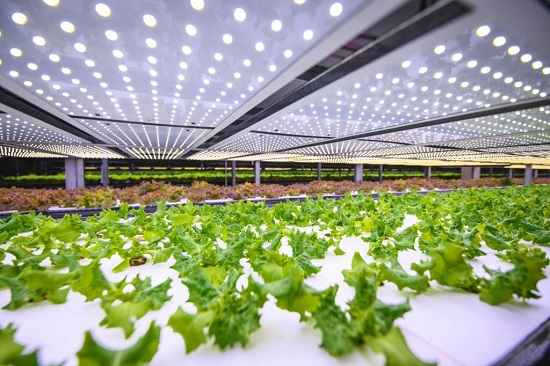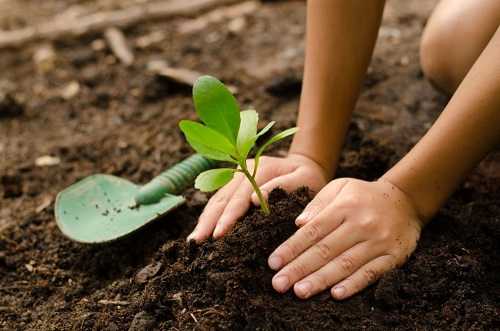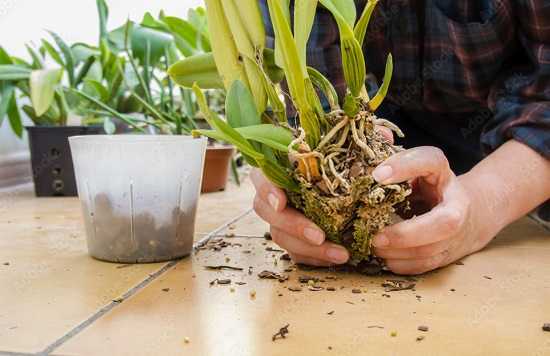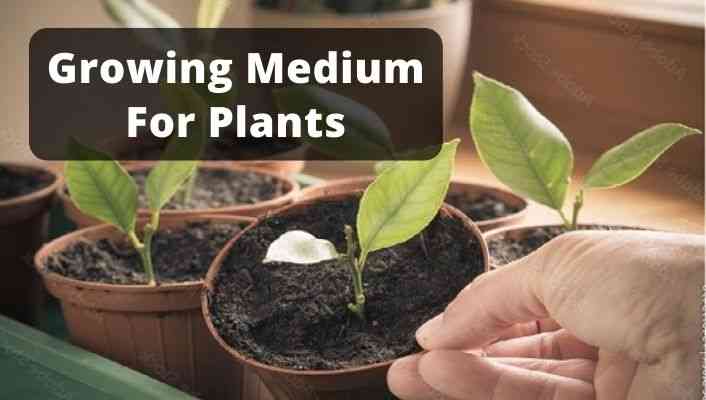Defining the main subject of this article, we can say that a growing medium is a material, environment, or place where plants grow out their parts, especially the roots.
Growing medium for plants should be perfect as it modulates plants’ watering, aeration, and nutrient supply. There are many types of growing mediums for plants that can be used alone or can be combined.
In the following piece of information, we will discuss and make you aware of the main types of growing mediums. Moreover, we will try to suggest you in choosing the right one for your plant.
Post Contents
Functions of Growing Medium for Plants:
Usually, growing mediums have a lot of functions to aid plants in many ways. But, we will discuss the three main functions for an amateur understanding.
- Firstly, the growing medium provides overall physical strength and support to the plant.
- Secondly, it facilitates easy and healthy root growth.
- Last but not least, it delivers water, air, and essential nutrients through the roots.
Characteristics a Perfect Growing Medium should have:
When making a growing medium by combining different elements or using one alone, You should always check on some points that make a perfect growing medium.
Checking its density (how much weight the medium has). Its water-retaining capacities, along with its air-retaining capacities, should not clog. Lastly, always check for the right pH level according to your plant.
Related Article: Philodendron Rojo Congo Care Guide
Uses of Growing Medium:
These are mostly used in all kinds of gardening activities. Having a suitable medium for your plants to grow in might be a blessing for a gardener. Let’s discuss the main gardening types where you will use growing mediums.
1) Potted gardening:
Mostly the usual soil used in pots is used for container gardening. For this, a mixture of mediums is often made, like mixing the soil with perlite, vermiculite, and peat.
2) Outdoor gardening:
A blend of growing media is usually not necessary for outdoor gardening, but making some changes improves the soil in the garden.
The best option is to add 2 or 3 inches of topsoil to your garden and mix this in with the existing soil. Topsoil may contain many types of growing media, such as sand, compost, and wood fiber.
3) Hydroponic gardening:
It is a soil-less type of gardening, but still, it requires a growing medium to help secure the plant’s roots.
Some popular ones include coco coir, expanded clay pellets, and rice hulls. These soilless mediums are often mixed with perlite or vermiculite.

Types of Growing Medium:
The most common growing mediums for plants are:
1. Perlite and Pumice
Perlite is a silicate mineral of volcanic origin, also known as volcanic glass. You can usually find them being sold in bags of roughly white-shaped spheres. Perlite is very light because its lightness and uniformity make it useful for increasing aeration and drainage.
Perlite is very dusty when dry and tends to float to the top of a container during irrigation. In the end, only to say that it’s an effective amendment to growing media.
Pumice is almost related to perlite. The differences are that it is a little bit heavier and darker in color. However, it is used for the same purposes as perlite.
2. Vermiculite:
Vermiculite is a micaceous mineral, mainly composed of clay, produced by heating to approximately 745 degrees Celsius. The expanded plate-like particles have high water retaining quality, so they should never be confused with perlite.
It is a good option as vermiculite acts like a sponge sucking water. Hence, this can be an excellent addition for thirsty plants or if you do not want water often. When the medium is dry, it slightly improves the aeration of the roots.
Although vermiculite is less effective than sand and perlite, its chemical and physical properties are desirable for container or potted plants.
Also Read: Is Moss a Fungus? – (Complete Guide About Moss)
3. Calcined Clay, Sand/Silt:
Calcined clays are formed by heating clay minerals to approximately 690 degrees Celsius. The pottery-like particles formed are six times as heavy as perlite. Calcined clays have a relatively high ionic exchange quality and water-holding capacity.
This material is a very durable and useful choice. These are generally used to increase the number of large pores, decrease water holding capacity and improve drainage and aeration.
Sand or silt is the basic component of soil. Sands with slightly bigger particles provide a better component for the medium as they provide better aeration and texture.
Although the sand is generally the least expensive of all inorganic amendments, it is also the heaviest. Sand is valuable for both potting and propagation media.
4. Compost:
Compost is well-rotted organic matter. It has a good earthy odor and is produced from material that otherwise would be wasted (like vegetable, fruit, and animal waste). You can find it easily in large stores or make your own.

Now the question arises, why should you use compost in your growing medium? Let us tell you why it is because compost can:
- Make up the right bacterial environment: hearing of bacteria might raise a concern, but in reality, healthy soil has lots of beneficial bacteria that reduce diseases, avoid some pests and, more importantly, allow the breakdown of nutrients. This is the most important benefit of compost, as its nutrient content is small.
- Improve the nutrient content: not confuse compost with fertilizer. Although it does have nutrients, these are in a small amount (2 to 4%). Hence, the presence of the nutrient does help, but it is not the main reason to use compost.
- Increase water trapping: compost usually retains water, keeping the growing medium moist and providing water when plants need it the most.
5. Peat Moss, Peat-like materials – or Coco Coir:
Accumulated plant materials form peat moss in poorly drained areas. The type of plant material and degree of decomposition largely determine its value for use in a growing medium. You can easily find it being sold in supermarkets with a gardening section.
Coco coir is by far the best peat moss substitution. This material comes from the waste coconut coir that otherwise would be wasted, so it is an environmentally-friendly material for making a healthy growing medium for plants.
Like peat moss, coco coir is gaining popularity, although sometimes it is harder to find than peat moss.
6. Rice Hulls or Sawdust:
Rice hulls are a by-product of the rice milling industry. They are extremely light in weight. Using this in your medium will be effective at improving drainage. They are very resistant to decomposition.
Coming to Sawdust is wood in a very fine form, almost powder. This is usually produced as waste when working with wood (from cutting, planning, or any other operation that requires reshaping or cutting wood).
Rice Hulls and Sawdust have quite similar properties, and you can easily use one of them in your growing medium.
7. Wooden Barks & Leaf Residues:
Wood residues constitute a significant source of soilless growing media. These materials are generally by-products of the lumber industry and are readily available in large quantities.
Nitrogen depletion by soil microorganisms during the decomposition process is one of the primary problems associated with these materials. However, supplemental applications of N to the growing media can make most wood residues valuable.
Wooden Barks – are primarily a by-product of the pulp, paper, and plywood industries. Suitable particle size is obtained by hammer milling and screening.
Related Post: Anthurium Crystallinum (Care, Growing & Propagation Guide)
Wooden bark, usually placed on top of the soil to cover it, covers two important roles:
1. Trap moisture: especially in hot weather, the water will tend to evaporate easily, making your plant suffer. However, you can solve this problem with a top layer of wooden bark to trap moisture and keep the growing medium below cool;
2. Protect from temperature variations: a top layer of wooden bark also acts as a thermal insulator keeping the roots protected from extreme temperature variation.
Leaf Mold – maple, oak, and sycamore are among the principal leaf types suitable for preparing leaf mold. Layers of leaves and soil are composted with small amounts of nitrogenous compounds for approximately 12 to 18 months.
Using leaf mold can effectively improve the aeration, drainage, and water-holding properties of a growing media. Although these materials are readily available at a low cost, leaf mold is not extensively used in container production.
Read More: Cucumber Plant Stages of Growth
8. Expanded Polystyrene:
Polystyrene flakes, a bi-product of polystyrene processing, are highly resistant to decomposition, increase aeration and drainage, and decrease bulk density. Polystyrene may be broken down by high temperatures and certain chemical disinfecting agents.
9. Urea Formaldehyde:
This material is prepared by mixing air with a liquid resin and allowing it to cool. Urea-formaldehyde foams have a greater water-holding capacity than polystyrene but are similar in their influence on aeration and drainage. Raw materials are easily transported and are very effective amendments.

10. Limestone:
Limestone is a rock generated within centuries of marine animals’ skeleton accumulation. It is usually sold in large bags (quite cheap) and appears commonly as white dust.
Its exact consistency changes the function of the type of limestone you buy. Limestone is a material added to the so-called soil-less growing medium to correct the soil pH.
How to Select a Growing Medium for Plants:
Every gardening project is unique, so it’s important to select a growing medium that will serve the distinct needs of your plants and growing system. Some factors that you should consider include:
Drainage: Some plants, such as palms, prefer sandy, well-draining soil while others, like hosta, grow well in heavier clay soil. The irrigation and drainage system available to your plants also plays a big role.
pH level: Each plant has its preferences for pH level. For example, magnolias and gardenias like acidic soil, while lavender and honeysuckle like alkaline soil.
Nutrients: All plants need nutrients, and your growing medium will help deliver them. Do you need a hydroponic medium that will deliver nutrients through the water efficiently or a medium such as compost that already contains the nutrients you need?
Selecting the right growing medium for your garden will help it thrive by delivering the proper moisture, air, and nutrients to every plant.
FAQs:
1) What are the cheapest growing mediums for hydroponics?
Perlite, Rockwool, and grow rock are the cheapest options for the hydroponic grower. Moreover, they can be easily found in the majority of large retailers.
2) What is the best growing medium for plants?
There is no single growing medium that is suitable for every plant. However, a regular potting mix or cacti mix can satisfy the requirements of the vast majority of houseplants (with a few exceptions). The potting mix is ideal for many houseplants, while the cacti plant mix is specifically for those plants native to dry areas (like succulents).
3) What is the primary growing medium for plants?
While soil is the traditional growing medium, it’s far from the only option. It’s typically best to amend the soil with one or more growing media for optimal results in your gardening endeavors.
4) What are the 4 components of growing media?
There are five main components commonly used in making growing media: peat moss, bark, coir, perlite, and vermiculite.
Conclusion:
I hope this made you gather all the essential information about the growing medium. Now you can easily make up your own for your desired plant.
Related Articles:

